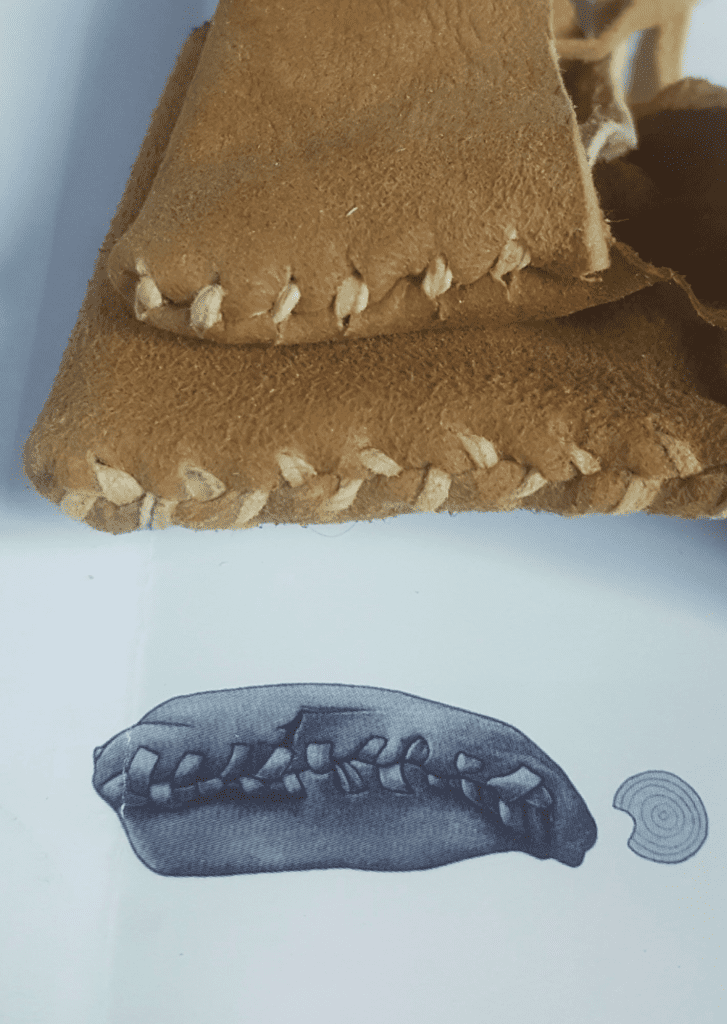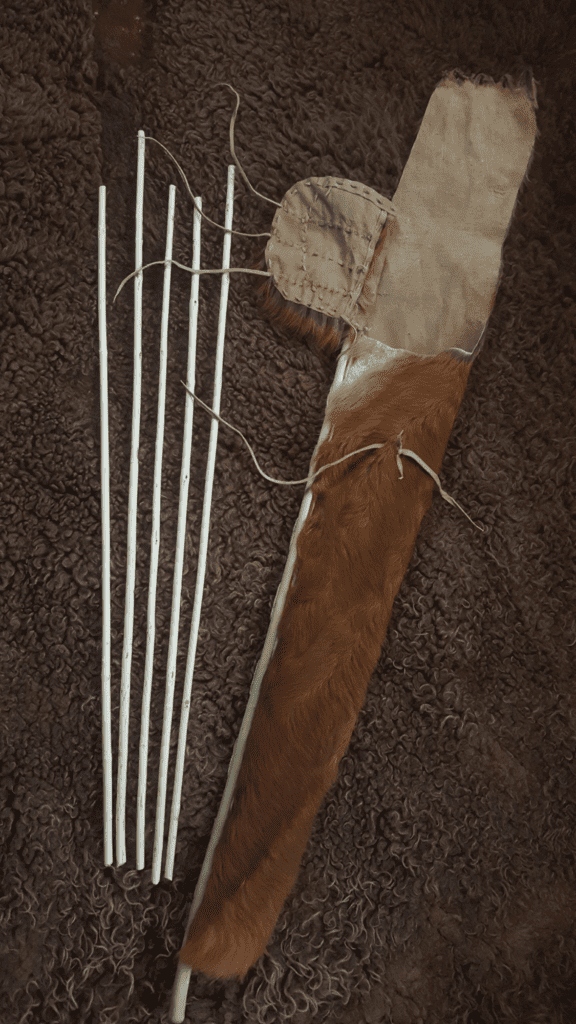In 1991, two tourists on the Ötztal Alps, on the border between Austria and Italy, made a discovery: the body of an ancient man. The man, nicknamed Ötzi or The Iceman, is thought to have been killed sometime around 3105 BC, more than 5,000 years ago. Ötzi is Europe’s oldest natural human mummy, and researchers believe he was killed because of the arrowhead found in his shoulder and the many injuries that he had sustained.
But despite a great deal of research into Ötzi, we’re still learning new things about him and his equipment. In a recently published study, Markus Klek, an expert in ancient technology, recreated Ötzi’s quiver and found that the original process is much more complex than expected.

The mummy has been studied over and over again, with some of the best techniques available to science. The body has been X-rayed, and dated, tissues and intestinal contents have been examined microscopically, as have the items found with the body, and genetic analyses have also been carried out. We even know that Ötzi had tattoos (though some suspect that these were rather acupuncture marks, but this is contested).
It’s not only the body that’s interesting, however, but also the artifacts.
When Ötzi’s body was discovered, it was discovered along with a few items, including a loin cloth and fur cap (both made from brown bear), two birch bark baskets, some berries, leather shoes, a fire lighting kit, and two mushrooms connected with leather strings (one of which was used as tinder to start a fire, and the other being likely used for medicinal purposes). The set also featured flint and pyrite for creating sparks, but it also featured a knife, a bow string, an unfinished longbow, and a quiver with 14 arrows. The entire equipment of the glacier mummy attests to a “high level of craftsmanship and extraordinary technological and material knowledge.”
So Klek set out to see how exactly Ötzi would have constructed his kit — particularly, his quiver.
This quiver is one of the most intriguing artifacts, but also one of the most understudied ones.
“The most important artefact made of animal skin which is not part of the clothing is the almost completely preserved quiver for the arrows,” Klek writes in the study.
“The quiver has received relatively little attention and is even neglected in some treaties on the Iceman’s equipment. To the best of the author’s knowledge, there are no publications regarding reconstruction attempts,” he adds.

The first part of the reconstruction was establishing what type of animal the leather came from.
The main part and the transverse flap still have a few tufts of hair, which led Klek to believe that the quiver was originally covered in fur, and not dilapidated leather.
Previous analyses before 2016 also suggested that the leather came from deer or goat-like animals, but it was unclear exactly which animal. Funny enough, an error in translation from German to English also created confusion about the type of animal that would have been used for the quiver.
On the main part and the transverse flap there remain a few tufts of hair, which is why it is assumed that the quiver must have originally consisted of fur and not depilated leather — already, an important new find.

A 2016 DNA analysis concluded that the quiver was constructed from the hide of a roe deer (Capreolus capreolus). But according to Klek, the article which describes these findings poses some questions as it is unclear from where exactly the quiver samples were taken — and since the quiver is made of several distinct parts, this is important.
After some investigating, Klek found out that the sampling was not carried out directly on the main part of the quiver but rather on an assembly of three separate leather strips which are assigned to the quiver, so it’s not entirely clear what animal the main part actually comes from. It’s most likely the same animal, but this is not clear.
“After the first attempt of the author to reconstruct the quiver, it became apparent that this analysis result raises some questions. As a result, it became necessary to find out where exactly on the quiver the samples for the DNA analyses were taken because, after all, the object consists of two separate main parts and several individual straps,” Klek writes.
Then, Klek notes that the leather was possibly treated with smoke, as well as several animal or vegetable fats, and maybe even minerals and clays — this marks a complex leather treatment that can also be substantiated based on evidence from other ancient artifacts in the area.

After the first basic replica was produced, a more in-depth version, that would be as similar as possible to the original in all aspects, was created.
Of course, in order to reconstruct the quiver accurately, he had to pay attention to every individual part, and the biggest challenge lay in introducing the fur into the design. But another, more fundamental, problem was figuring out what tools were used.
For those who aim to recreate ancient artifacts, using the same type of tools is essential, but in this case, it’s not exactly clear what tools were used. There is evidence that some of the tools Ötzi was carrying were used in the making of this type of artifact, but it’s not clear if something else was used as well. However, these tools proved sufficient for the task.
“In any case, it was decided to attempt the manufacturing of quiver 2 exclusively with replicas of the tools which the Iceman carried. The reconstruction showed that the man from the Tisenjoch had all the types of tools with him that are necessary to manufacture or repair a quiver,” Klek writes.
“The tools proved to be sufficiently functional for the necessary work steps. However, the small flint blade became blunt due to the high stress and had to be replaced with a fresh one. The distal end of the bone awl was wrapped in leather to protect the hand.”

Ultimately, the replica is similar to what the original quiver would have looked like, although Klek highlights the need for more studies on the origin of the leather.
This type of reconstruction study can help us understand how people lived and worked thousands of years ago, offering a unique glimpse into their lives. Modern archaeology is not only about finding things, it’s more about understanding and making sense of people’s lives.
No doubt, there’s still much we’ve yet to learn about Ötzi and his contemporaries, but thanks to this work, we’re getting closer.







